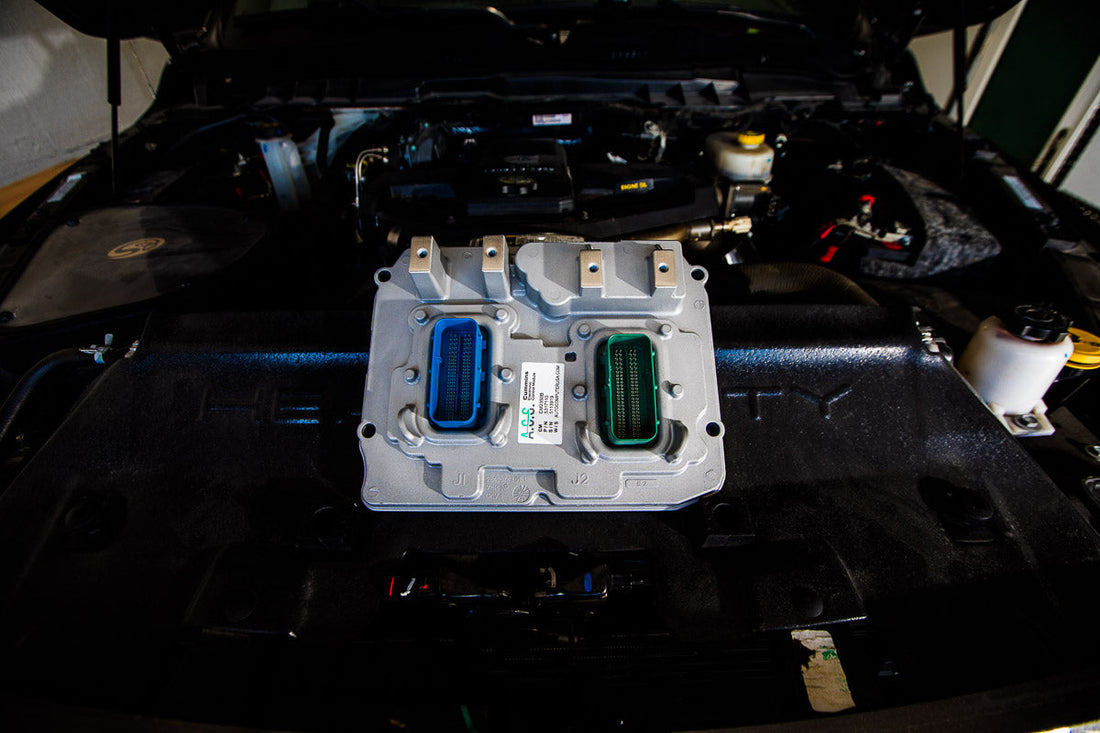
How to Tell If Your 5.9L or 6.7L Cummins ECM Is Going Bad
Share
A Practical Guide for Pickup Truck Technicians and DIY Mechanics
At Automobile Computer Solutions (ACS), we’ve seen it all when it comes to failing diesel ECMs—especially on 5.9L and 6.7L Cummins-powered pickup trucks. Your ECM (Engine Control Module) is the brain of the operation. When it goes bad, symptoms can look like 10 different problems at once.
This guide breaks down the most common signs of a bad ECM, so you can spot trouble early and avoid chasing your tail (or replacing parts that don’t need replacing).
🔧 1. No-Start Condition with Good Crank
If your truck cranks strong but doesn’t fire up, and you've already verified fuel pressure and air delivery, the ECM might be the issue. Here's what to look for:
- No injector pulse
- Fuel pump not activating despite command
- Scan tool won’t connect to ECM or shows “no communication”
- Power and ground at ECM confirmed, but no outputs
- It also could be problems with the TIPM
💡 2. Random or Intermittent Power Loss
Does the truck start and drive fine—then suddenly die or lose power without warning?
- This could point to internal ECM circuitry damage
- Look for heat-related symptoms (the ECM quits after warming up)
- Try gently tapping the ECM with the key on — yes, really. If systems flicker or reset, the board inside may have loose solder points
🔍 3. Diagnostic Software Won’t Communicate
If you connect with a quality scan tool or OEM software and can't establish communication, it’s often either a wiring issue or the ECM itself.
Here’s how to isolate it:
- Check for power and ground at the ECM connectors
- Inspect the CAN/J1939 lines for proper voltage
- Plug in to another known-good truck (if possible) to rule out your tool
- If all else checks out, your ECM might be internally shorted or locked up
🔁 4. Fault Codes That Won’t Clear
It’s one thing to have stored or active fault codes — it’s another when they refuse to clear or immediately return even after verified repair.
This may indicate:
- ECM memory corruption
- Output drivers stuck in a failed state
- Internal logic circuits not recognizing sensor data updates
- In these cases, if all sensors and wiring are confirmed good, it’s time to suspect the ECM.
🔄 5. Injector Control Issues
A failing ECM may cause the truck to run rough, misfire, or drop cylinders under load.
Symptoms include:
- Cylinder contribution tests that fail on multiple cylinders
- Injector cut-out tests that show “no response”
- Uneven idle or random shutdowns when warm
- If injectors and harnesses test fine, the ECM’s injector drivers may be the culprit.
🧠 Bonus Tip: Heat and Moisture Are ECM Killers
Most ECM failures we see are due to long-term exposure to:
- High under-hood temps
- Poor grounds
- Water intrusion through corroded connectors
Check for signs of corrosion or melting at the ECM plugs. If you spot it, the board inside is likely damaged.
Final Thoughts
Modern 5.9L and 6.7L Cummins engines depend entirely on a healthy ECM. The good news? Once diagnosed properly, a failing ECM can be quickly resolved — especially when you partner with a specialist like ACS.
We don’t just sell or repair ECMs—we program, test, and ship them ready-to-install, so you can get your truck back on the road fast.
Need Help?
If you're seeing any of these symptoms and aren’t sure if the ECM is to blame, give us a call or visit dieselacs.com. Our team can walk you through next steps and provide a replacement or repair that’s fully programmed and tested for your exact truck.

